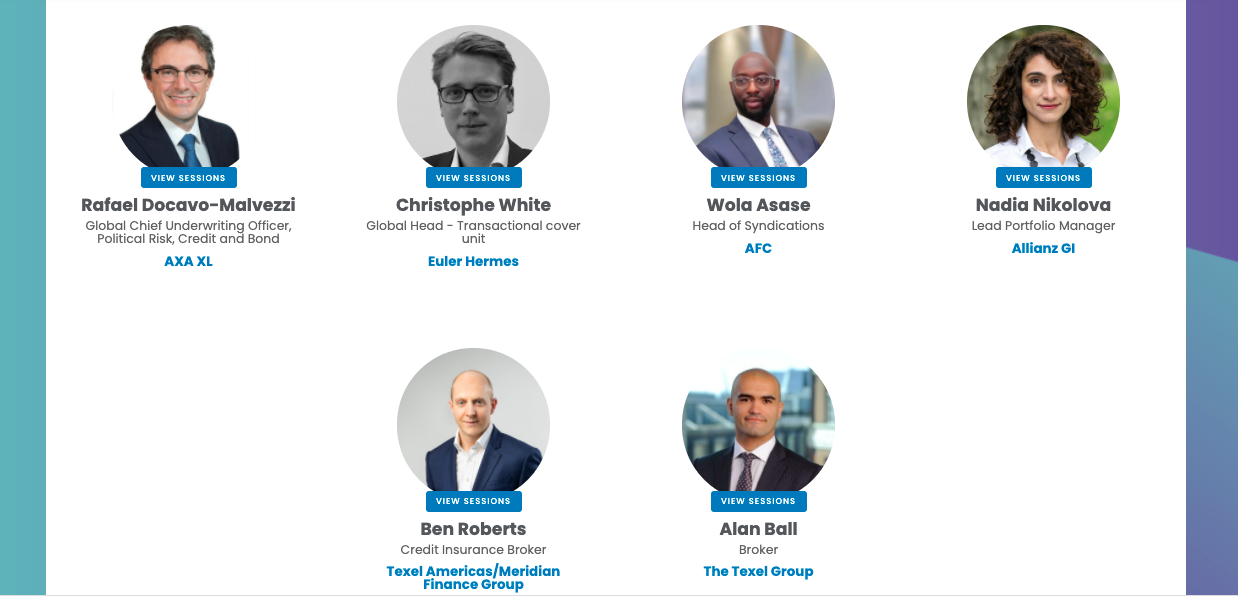Non-payment insurance in development finance: main takeaways from the Texel virtual event
On June 30th, insurance brokers Texel hosted a Development Finance Insurance (DevFIns) 2021 virtual event, offering a general sentiment on the private insurance market, particularly non-payment insurance (NPI) and its application in the MFI / MDB space. Industry experts from EBRD, IDB Invest, IFC, Euler Hermes, AXA XL, Liberty, Allianz, Tierra and AFC joined multiple discussion panels exploring NPI in development finance, and how the industry has fared during the pandemic.

Non-payment insurance - what is it and who uses it?
NPI is a comprehensive insurance product used by DFI’s and MDB’s as an unfunded guarantee protecting against the risk of non-payment of principle (and interest) by borrowers. This allows the DFIs to transfer the risk of the borrower’s default to the insurer, typically a much better rated guarantor (A or better).
In short, an insurer sits behind a DFI / MDB, who pays a premium in respect of the credit risk the insurers assume. That premium will generally be considerably less than the interest margin, in order to ensure the net economic cost to the DFI is less than they are receiving in.
NPI covers against a non-payment event for any reason during the life of a transaction.
It is important to point out that NPI is a sophisticated form of risk mitigation and is very distinct from other insurance products, such as the purely political risk type products which were in play during the Argentine financial crisis of the late 90s. These products only covered losses where the government had expropriated assets, or in cases of currency inconvertibility.
But do insurers offering NPI pay out?
In short, yes. $3.3 billion was paid in claims between 2007–2019 under NPI policies placed via brokers to financial institutions. This number represents 97% of all such claims made. Included in the 3% are 15 cases where the insurance paid wasn't 100%, however all 15 cases were settled partially settled, with no disputes going to arbitration.
Looking at this from a performance perspective, it's a huge volume of claims payment, showing a willingness of insurers to pay out.
Indeed, many commercial and financial institutions have treated NPI as a guarantee for regulatory capital reasons, something DFI’s and MDB’s can potentially benefit from too, and it is certainly performing as if it were one.
NPI as a key capital mobilisation tool for DFI’s and MDB’s
According to the UN, achieving the SDGs will require an annual investment across all sectors of around $5-7 trillion. Current levels of development financing are not sufficient, with an estimated $2.5 trillion funding gap per annum to realise the SDGs in developing countries alone.
The size of the funding gap means no single institution can take on such exposure alone, opening up an opportunity to the insurance market to support the new and growing sustainability mandates of public agency clients, especially the need to facilitate project finance deals with longer tenors.
“There are often times where IFC alone doesn't have the capacity to be able to fulfil the financing package requested by the borrower, and there aren't necessarily B lenders, parallel lenders who are available, and insurance really steps up and is able to help us close that gap,” said Mahfuza Afroz, Head of Credit Insurance Products, Syndications, at the IFC, speaking at the event.
Afroz astutely notes the symbiotic nature of the relationship between insurers and MDB’s, in so far as insurers are able to access a suite of assets and exposures that they otherwise may not be able to find, or get their hands on through commercial banking clients, be it in terms of country, structure, or tenor. On the MDB side, institutions like IFC may have some ‘quirky’ transactions that not everybody has the appetite for, and that insurers might.
The general consensus among the insurers was that, perhaps counter intuitively, in the current uncertain world, ‘quirky deals’, with longer term tenors on the more structured fields is a smart place to take on exposure, largely owing to the expertise and track record of MDBs in difficult to invest in parts of the world.
Indeed, insurers as a whole found DFI’s and MDB’s attractive clients, taking comfort in the fact that they typically have a long track record and commitment through various crises in pretty challenging markets, with a high level of transparency in providing information to the insurance market. They are also well connected to governments with a lot of boots on the ground in the countries they're operating in, alongside a good credit status. This has encouraged insurers to take on exposures and transactions which they were previously hesitant to.

Innovation in the NPI space
It was widely acknowledged that Innovative, creative solutions will be key in de-risking transactions and crowding in the much needed private capital to bridge the trillion dollar funding gap in emerging markets. However, innovation in the insurance sector is not a recent phenomenon but part of a longer, 15-20 year, development process, where the insurance product itself has had to evolve and innovate in response to client demand and regulatory changes. This product is now attractive to MDB’s precisely because of this innovation, forming a product that is much less conditional and very different from what came before.
Alongside the product on offer, the type of clients accessing NPI has also evolved, expanding from commercial banks to export credit agencies and MDBs, which is driving a burst of innovation in the NPI space. MDBs, in particular, have been crucial in this regard, bringing different asset classes, countries and structures to the insurance market which has allowed insurers to innovate.
“There's lots of things that have been done in the multilateral development space in conjunction with credit insurance that we wouldn't be doing if it were commercial banks that were sitting across the table from us,” said Andrew Beechey, Managing Director at Tierra Underwriting.
Not only has this evolution allowed iNPI to grow as an insurance industry sector, but has also allowed DFI’s and MDB’s to find different distribution channels and grow the support they can provide to their members.
There was a general consensus that communication with clients, understanding their products and procedures is a vital part of the innovation process. In fact, MDBs openness and willingness to exchange information has proved fruitful for both the multilaterals and the insurance sector.
“If you increase our understanding of how you go about doing your business, and you clearly do your business very well, how can you bring us along?” added Beechey. “A lot of that is about knowledge sharing and being open. I think that's probably the key driver that would help us innovate, because we understand what you're doing.”
Challenges - trust and education is key to fruitful partnerships
Trust, understanding each other's processes, and getting comfortable with the documentation between parties is vital if the partnership between insurers and development finance is to work, observed Anna Tipping, Head of Insurance Asia at law firm Norton Rose.
“It’s an education process and very much a sort of eyeballing process to make sure that each party is comfortable with the other as a counterparty, because it's a relationship based on trust, as much as on the contractual terms,” said Tipping, speaking at the event.
These hurdles are typically not enough to put off insurers, rather it's common for an insurer to take an incremental approach, starting with small deals and scaling up. It was emphasised across all panels that doing deals, even small ones, will get DFIs and insurers used to each other's processes, appetites and limits, providing a path towards scalability.
COVID did not result in the claims apocalypse that was anticipated
Unsurprisingly, COVID was also raised during the panel discussions. The insurance sector as a whole fared well during the last 18 months, and as to be expected, the market is still very focused on the COVID-affected sectors facing high levels of uncertainty, such as travel and tourism, retail, commercial real estate. However, the insurers report witnessing a strong flow of business with 2021 looking very positive, both from an income and claims perspective. In fact, in 2020 the number of claims and rates of insolvency were lower than an average year, owing to huge stimulus packages, particularly in developed economies.
The large amount of liquidity available, which helped mitigate claims activity, losses, and defaults in the market, may pose a challenge in the longer term, putting pressure on insurer’s margins. In fact, concerns are mostly reserved for the medium and long term. The sector expects debt restructuring and debt forgiveness to continue for the time being, the speed and scale of the withdrawal of which will determine the impact of COVID.
“The performance through the pandemic justifies the business model. And it shows that what we're doing does make sense, and in some respects gives us impetus for future growth,” said Christophe White, Global Head of the Transactional cover unit at Euler Hermes
“But that needs to be if you like counter COVID, we need to be underwriting smartly, in the way that the economy is changing. And that's changing because of the pandemic, because of the shift to green and the new economy.”




